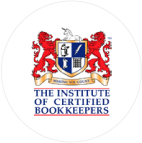
A balance sheet is a statement of the assets, liabilities, and equity of a business or other organisation at a particular point in time. A balance sheet can also be described as a snapshot of a company's financial condition.
A balance sheet is broken up into three sections: ASSETS, LIABILITIES AND EQUITY.
The difference between the assets and the liabilities is the equity of the company. Also known as net assets, net worth or capital.
So, you’re starting a business, you go to the bank and get a loan. On your balance sheet this loan shows as a liability, as it has to be repaid to the bank. It also shows as an asset for the same amount, as you have the cash to spend. Thus the balance sheet is balanced!
You need to buy a computer for your new business—the cash in your assets decreases but your new computer asset helps balance this. As you sell to your customers, your profits are recorded as retained earnings in the equity section. The cash from these profits is recorded in the assets section and the sheet remains balanced.
Every month you make a loan payment to the bank—your liabilities reduced by the amount of the payment, and your cash is reduced by the same amount.
If at any point you need to find out your businesses worth, go back to the formula from before.
ASSETS - LIABILITIES = EQUITY
To get more information about this, please contact us using the details shown on screen.

Clear Books, accredited by The Institute of Certified Bookkeepers and registered with the Financial Conduct Authority (reg. no. 843585), delivers valued, comprehensive online accounting software for small businesses in the UK.